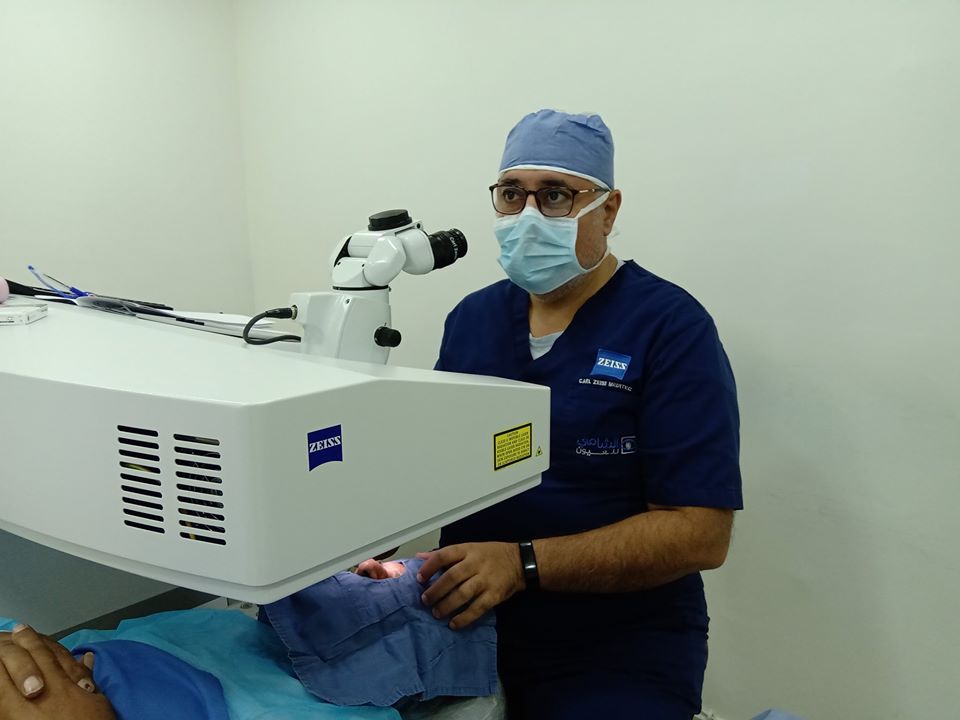
Vision correction surgeries

LASIK vs. PRK:
There is a layer on the surface of the eye called (epithelium), which is replaced by the eye every 7 to 14 days.
In LASIK: a thin cut (flap) is made in the cornea. This cut involves the epithelium and part of the corneal material. Then, the eye surgeon is able to change the shape of the remaining layer underneath. This allows the surgeon a little doorway for re-shaping the permanent layer.
By returning the flap to its original position, it is only the edges of the flap that need to heal. Thus, the recovery time of LASIK is very short (usually 1 day).
In PRK: the epithelium is removed and discarded, so the eye surgeon is able to change the shape of the permanent layer underneath. Following this, a contact lens is applied as a bandage to allow the epithelium to re-grow under the contact lens. However, the recovery time of PRK is usually longer than that of LASIK (usually 4-5 days).
Both surgeries are safe and effective, and carry a very high rate of patient satisfaction. Choosing between PRK and LASIK is a decision best made in consultation with a trained eye doctor who is specialized in laser eye surgery. The choice depends on several factors, such as: corneal thickness – degrees of sight problems that need to be corrected – and severity of eye dryness. The good news is that our experience at (Amman Eye Clinic) has shown that whichever you choose, you’re likely to be very pleased with the outcome.
- Implanting An Artificial Lens (ICL) With Maintaining The Natural Lens
The ICL is a lens which is placed inside the eye to correct some sight problems. It has the potential advantage of being removable, and does not require the cornea to be sculpted as in LASIK and PRK. However, it is more expensive than either.
The ICL does not cause inflammation within the eye. It is one of several brands of lenses that go into the eye along with the natural lens to improve the vision as opposed to LASIK and PRK which work by changing the shape of the front surface of the cornea.
The ICL is most often used in high degrees of shortsightedness or farsightedness or in cases where the cornea is too thin preventing LASIK. In cases where the ICL does not fully correct the vision, patient may need to undergo LASIK on top of ICL in order to “fine tune” the sight.
In our clinic (Amman Eye Clinic), we are proud of our large experience in performing all types of vision correction surgeries, and their excellent long-term results.
If you have any questions regarding getting rid of your glasses, please do not hesitate to call (Amman Eye Clinic) for further information

